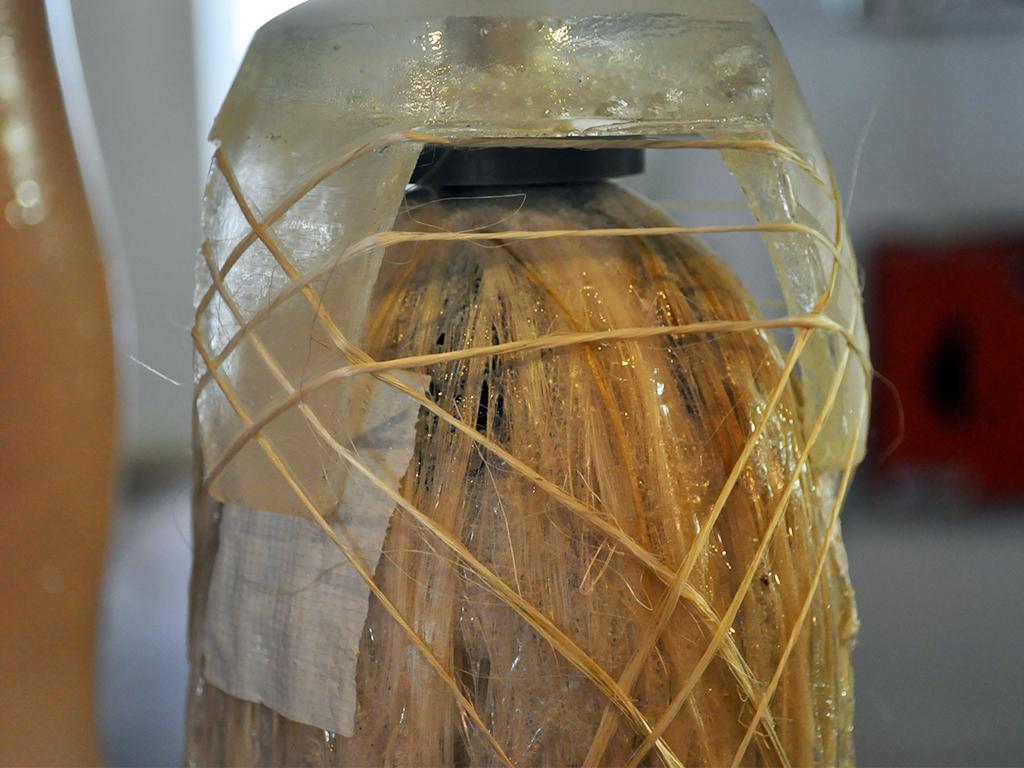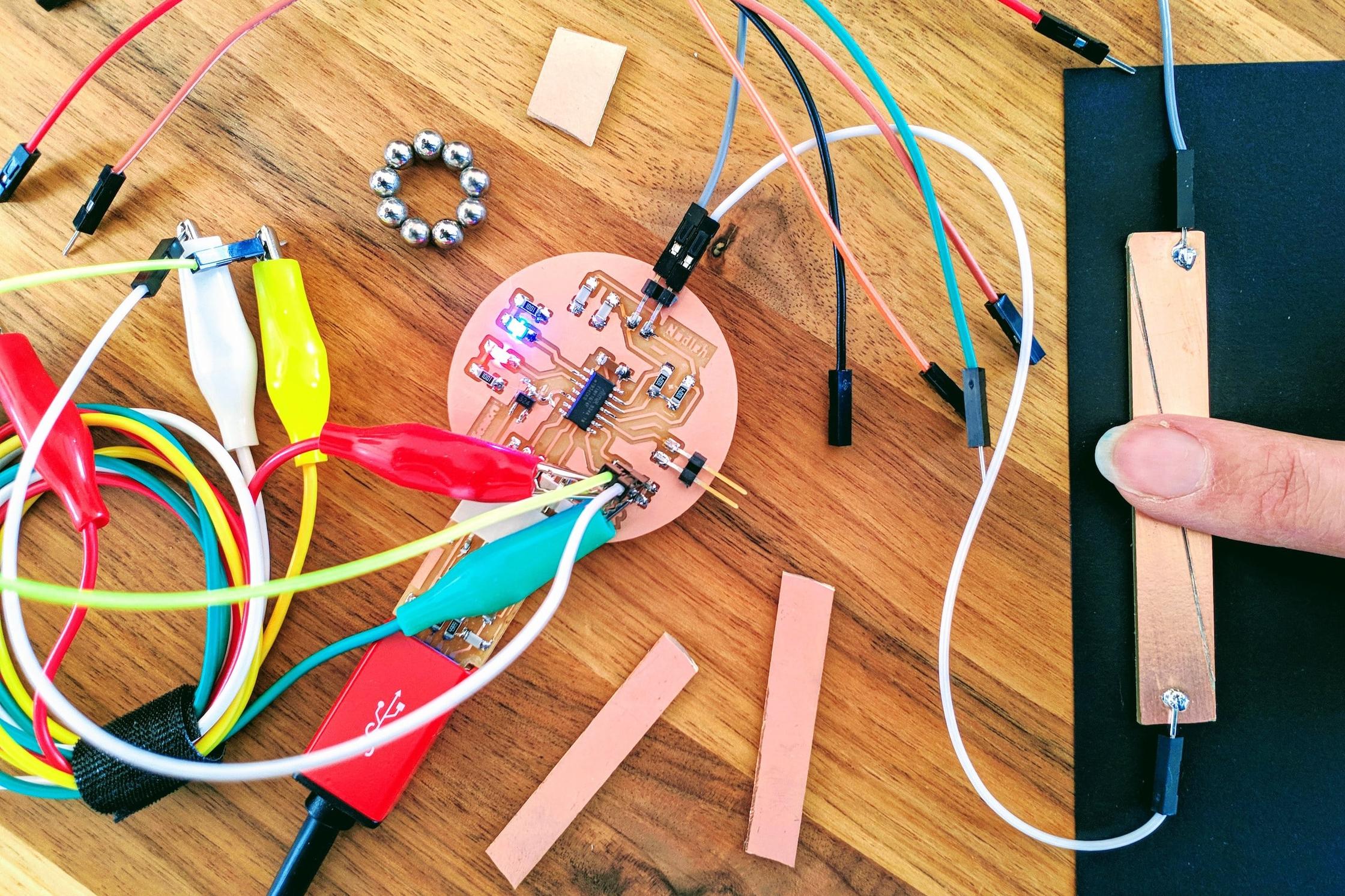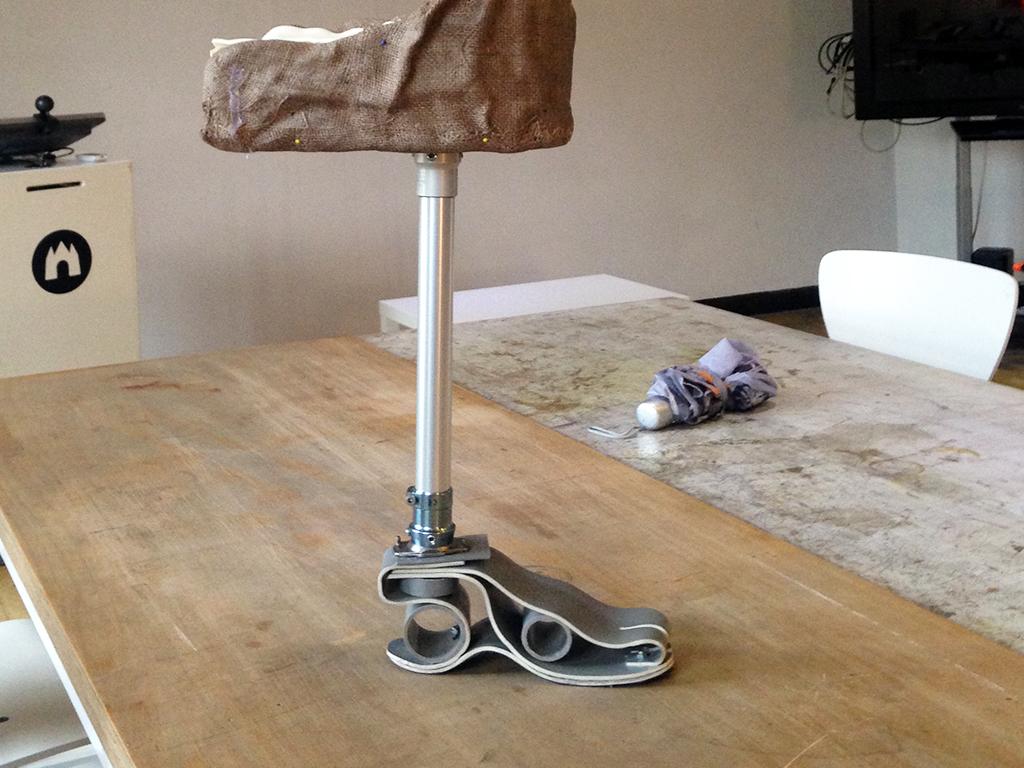In the past weeks I worked on the Low-cost self-adjustable lower leg prosthesis during my internship at Waag. In this period of 13 weeks I focused on the case (that is the top piece of the prothesis, carrying the stump of the patient) and the mechanism that connects the case to the prosthesis. In my research, I combined several natural fibres with polyurethane resin to create a composite material for the casing.
The fibres that I tested were: banana leaves, coconut and pineapple, combined with four different quantities of resin. I made samples of these at Fablab Amsterdam, that were tested at UMCG Groningen on their tensile load. A puller tears the samples apart until they break or the point that they are streched to their limit. During the proces the machine measures the power the material can handle and how strong the deformation is.
From the results we learned that ananas fibres and Smooth-Cast 326 forms a usable composite. The average maximum force the material can handle is 1735 N which equals 177 kg. Besides testing the natural fibres, an adapter was developed to connect the casing, keeping the self-adjustability. It also supports the casing to withstand more pressure.
In the end a prototype was built with the built-in adapter. The method to take the patient's measure is not yet optimal. Creating the prototype cost three days, which is too long. Patients cannot be asked to take three days for this procedure. The most time-consuming element in this was bringing the fibres in the right direction. It would be ideal if these were woven in bags that could be bulled over the patients's stump. In that case, it would only take about half an hour.
To get a good idea of the perfect casing measurement we had a presentation by Össur, one of the largest companies in the field of external orthopedic prosthesis and braces. It took place at the Waag and at the presentation actual casing for a lower leg prosthesis was made in a live session. This learned us much about the process and will push our development further in the right direction. The presentation was given by Leo de Groot, former director Westland Orthopedics. He will stay closely connected to the project and has a vast knowledge and contacts to help the project further.
The Low Cost Self-Adjustable Lower Leg Prosthesis was nominated at the FAB10 Awards in Barcelona. This has given the project extra publicity and is also a good motivation to continue the efforts. Much progress has been made in the last 13 weeks. It has been proven that ananas fibres combined with Smooth-Cast 326 can be used as a material for the casing. The project has a lot of potential and should certainly be further developed. It is very important that every adjustment is researched very well in advance.



